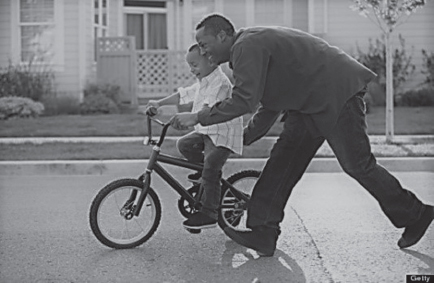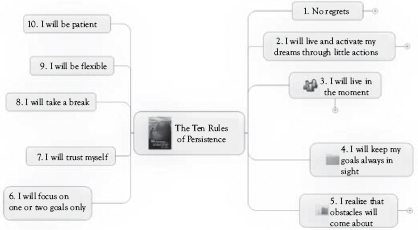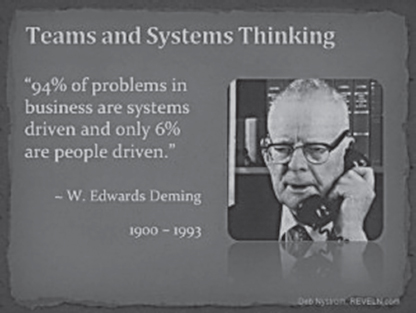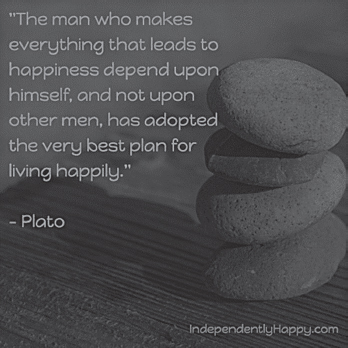Be a contagious mosquito all the time and infect your organization positively.
—Alfonso Bucero
A big part of your success comes from how you are able to maintain and sustain your passion, persistence, and patience. You need to dedicate time to do it, and in this chapter, I will share with you what I learned about sustaining my 3Ps. Not all the project managers have a positive behavior all the time. I learned over the years that every project manager needs to spend some time trying to be more positive when dealing with team members, customers, and other stakeholders. Some people confuse mood with attitude. A project manager can be in a good mood or in a bad mood every day, but his attitude needs to be positive the maximum amount of time. If you believe, you can infect your colleagues, peers, bosses, and other project stakeholders positively in organizations.
The Virus of Positive Attitude
I have found several definitions of a virus like “an infective agent that typically consists of a nucleic acid molecule in a protein coat, is too small to be seen by light microscopy, and is able to multiply only within the living cells of a host” or “a harmful or corrupting influence” (McConnell 2013). If we turn it around to a positive definition is what I am talking about. Be contagious as a positive mosquito in your project team, your organization, and your environment, and you will generate a more and more positive atmosphere. I have used that philosophy when helping organizations to implement a Project Management Office, project management methodologies, and implementing project portfolio management process.
Figure 4.1 Be a positive infectious mosquito
Infection needs to be smooth but continuous (Figure 4.1). That way the virus of positivism will demonstrate that you achieve small but tangible results over time. You also need to feed up the virus looking for allies in your organization who are able to disseminate that virus more and more using passion, persistence, and patience.
Only through persistence you can achieve everything in your project management career. Alexander Graham Bell said, “What is power is I cannot say; all I know is that it exists and it becomes available only when a man is in that state of mind in which he knows exactly what he wants and is fully determined not to quit until he finds it.” Persistence and patience are very interrelated, and both imply time and effort. In my experience every project professional must cultivate and develop persistence and transmit enthusiasm and positivism to his or her team. I have failed many times in my professional life, but I was willing to keep failing until I succeeded.
Projects are done by human beings who make right and wrong decisions during the project life cycle. This is part of human behavior that many executives forget during project execution in organizations. How to learn from successes and failures characterizes a project learning organization. One of the obligations from executives is to plan with their project managers for doing retrospective analysis during the project life cycle for each project. If lessons learned sessions are not planned as part of the project plan, they never will happen.
Trying hard and making many attempts is known as commitment and persistence in a general sense. Considering that projects are uncertain endeavors, project teams and project managers achieve right or wrong results. Depending on the point of view of those teams and leaders, the results will be considered as failures or as opportunities to learn. The learning attitude is a good characteristic of the right project leader. Every day I can learn something in my project, and it does not matter if I learn from my people, customer, or other project stakeholders. Good ideas or feedback can come from anywhere. The most important thing is how to move from failures to project success.
I can remember when I was a child, I learned how to ride a bicycle. Perhaps you had a similar experience that began with training wheels. Eventually, when these crutches were removed, keeping your balance became more difficult. You struggled to stay upright, maybe even falling a few times and scraping yourself. You were learning an important early lesson about failure. As you practiced, it is likely that one of your parents walked beside you shouting instructions, encouraging you and catching you as you lost balance. You were scared but excited. You looked forward to the time when you would succeed—when you would at last ride free on your own (Figure 4.2).

Figure 4.2 Try it again, and again
Or maybe you didn’t think at all but were so wrapped up in the experience and how to accomplish the activity. Nobody called you a failure nor were you worried about failing. Then, you kept at it every day, and eventually mastered the skill of riding a bike. What contributed to your ultimate success in learning how to ride your bike?
Well, persistence and sheer repetition, certainly. You were going to stick with it no matter how long it took. It also helped that you were enthusiastic about what you set out to achieve that you could hardly wait to reach your goal. And finally, let’s not underestimate the impact of positive encouragement. You always knew your parents were in your corner, supporting you and rooting for your success. As a youngster learning to ride your bike, you were optimistic, thrilled, and eager to meet the challenge. You could not wait to try again. You knew you would master it eventually. But that was a long time ago.
Yesterday and today: Now let’s examine how most adults approach the development of new skills. Let’s assume we asked a group of adults to learn a new software program or to switch to another position in the company. How would most respond? They would try to avoid it, they would complain, they would make excuses why they should not have to do it, they would doubt their abilities, and they would be afraid.
As adults, most of us become a lot more concerned about the opinions of others, often hesitating because people may laugh at us or criticize us. As a youngster, we knew we had to fall off the bike and get back on to learn a new skill. Falling off the bike was not a “bad” thing. But as we got older, we started to perceive falling off as a bad thing, rather than an essential part of the process of achieving our goal. It can be uncomfortable to try something new, perhaps even scary. But if you take your eyes off the goal and instead focus your attention on how others may be viewing you, you are doing yourself a grave disservice. To develop a new skill or reach a meaningful target, you must be committed to doing what it takes to get there, even if it means putting up with negative feedback or falling on your face now and then.
Successful people have learned to “fail” their way to success. While they may not particularly enjoy their “failures,” they recognize them as a necessary part of the road to victory. Agile for instance advocates the same idea. Agile approaches to projects have been touted by more and more organizations across the globe. IT companies, frustrated over expensive projects falling well shy of their goals, have been desperate for change.
Within an Agile framework, there is a concept of failing fast and then recovering to move on to success. But in far too many organizations, failure is a concept that must never be uttered. Before Agile, failing projects had management standing up for them, explaining to users that the user community did not understand what was being asked of IT and that the insufficient solution was what users, obviously, should have been expecting. A tap dance was performed for assuring users that what they thought they wanted was coming, later, and users should have understood that from the beginning. Left is right, up is down, at any cost users needed to be convinced all was well, even when things were seriously wrong. For IT, such reactions were simply a coping mechanism for survival. Sadly, those techniques do not hide things for very long. Those missteps and failures were why organizations ended up desperately searching for a new approach.
The inability to acknowledge failure can become a cultural norm within an organization. Such a force can derails Agile efforts. This everything-is-success perspective can pervert things. When users provide feedback about the latest deliverable not being what they want, an Agile team should accept that response, gather detailed information, and then use that newly acquired knowledge to correct the object under development. Agile techniques focus on delivering smaller pieces at a fast pace, so that failure of a single small unit is meant to be a small thing. The IT management needs to view these small deliverables as what they are. If instead, users are talked down to the solution really being what they want, or that the users do not appreciate how things must evolve, the only result is disengaged users. And disengaged users are exactly the opposite of what Agile approaches are trying to accomplish.
Accept failure. Failure happens far more frequently than most organizations are comfortable admitting. Although failure isn’t the best thing, within Agile it can be the second best. Organizations wishing to go Agile need to back off from the usual flinch response of hiding failures. It is the fear of punishment that drives employing all the coverups, word parsing, and other evasive tactics. These shifty techniques are often the main cause behind business having bad thoughts about their IT partners. Look at each failure as an opportunity to improve both your IT deliverables and your understanding with the user community. These circumstances are indeed opportunities and should be embraced as such. Fail early to learn so you can better serve your customers.
After all, becoming proficient at any skill requires time, effort, and discipline, and the willingness to persevere through whatever difficulties may arise. Persistence is the key. Every time I make a mistake managing a project, I recognize and say, “I made a mistake. I will do all my best to correct my mistake. My apologies about that.” It is the type of behavior I get across to my people. This attitude is very helpful in my life as a project manager. So, the greatest mistake of a project manager is not to recognize that something went wrong and not to say “I made a mistake.”
The Power of Persistence
I believe commitment is the essence of a learning attitude. The key to getting what you want is the willingness to do “whatever it takes” to accomplish your objective. What do I mean by this willingness? It is a mental attitude that says: if it takes five steps to reach my goal, I’ll take those five steps, but if it takes 30 steps to reach my goal, I will be persistent and take those 30 steps.
On most occasions in the project field, you don’t know how many steps you must take to reach your goal or to accomplish your deliverables. This does not matter. To succeed, all that’s necessary is that you make a commitment to do whatever it takes regardless of the number of steps or activities involved.
Persistent action follows commitment. You first must be committed to something before you’ll persist to achieve it. Once you make a commitment to achieve your goal, then you will follow through with relentless determination and action until you attain the desired result. The most difficult thing I found is how to convince the team about the big impact on business that commitment within projects has on organizations. When you make a commitment and you are willing to do whatever it takes, including the effort to communicate a clear, convincing, and compelling message, you begin to attract the people and circumstances necessary to accomplish your goal.
I started my project management services company 16 years ago and have been persistent sending proposals and delivering presentations to my customers about our services. Every year I review my company strategy and insist again on the customers we are pursuing to do business with. My objectives are clear enough so I never give up. Sometimes I was successful and the customer recognized my persistence. Other times I did not achieve my goal but I tried to learn from that experience and insisted again and again, keeping a polite way with my customers all the time.
My Rules of Persistence
Therefore, today I have decided on some “rules of persistence for my projects and for myself” (Figure 4.3):
1. No regrets: I will follow my dreams to the fullest. With all my energy I will give it my complete will and effort. So that even if the desired result does not come about, I will have no regrets. I know I tried. I honor all decisions made that they came from my freedom to choose and that I accept the consequences.
2. I will live and activate my dreams through little actions: Yard by yard, push by little push. I need not take massive action each day. But a little measurable step forward will bring me that much nearer to my goal. For example, when I was writing this book, I tried to write a little every day. I was not so productive on all days, but I moved forward a little bit.

Figure 4.3 The ten rules of persistence
3. I will live in the moment: Not in the past and not too much into the future. The full realization of the present will make the future come about on its own. Let me effuse all my energies on the present so that I don’t rue the time lost when the clock ticks over. Work hard today and for sure you will build up a better tomorrow.
4. I will keep my goals always in sight: I have written down goals. I carry a copy with me in my wallet. I am making a daily habit of at least going through it once. The other places I have kept it is as a wallpaper on my monitor. It’s always on my face and in my subconscious too.
5. I realize that obstacles will come about: I need to work around them. Goals are what lie behind all the stumbling blocks. If I cannot vault over them then I will walk around them. It might take longer but I will get around the block.
6. I will focus on one or two goals only: Focus is concentration on one single point. It’s much easier to be persistent when we have clarity of a single goal. Too many goals dissipate our energies and loss of energy is always followed by loss of persistence.
7. I will trust myself: When others can do it, so can I. I try out this mantra every day. Every day for me is a good day, and I say that early in the morning every day. I know all the power to achieve my goals lies within me. I only have to harness it.
8. I will take a break: I have to fill myself up with energy. After every slight success it’s important to taste a reward. Just to chill out for a while and then get back on the job rejuvenated.
9. I will be flexible: Constant action sometimes demands inconstant methods. If a way is not working too well, I will try to find out some other way to do it. There always is more than one way to skin the cat.
10. I will be patient: What defeats persistence is time. Time is our greatest friend as well as our greatest enemy. Persistent action by its very extension.
Acting Positive and with Passion Across Borders
My attitude is always positive, but some days my mood is not very good, then I need to do an attitude check (Bucero 2010). I wanted to share with you some of my best practices to be more positive in managing people in projects across organizations:
1. Put a quote of the day on everyone’s desk: Thinking positive you can find quotes that can impact positively to your people. I usually say: “Clear expectations are the mother of motivation.” You need to use positive and encouraging quotes every day. I have been using “the quote of the day” in most of the projects I managed, and after using it for some days I stopped sending it; immediately my team members came to me and asked, “Why did not you send the ‘quote of the day’ today?”
2. Use positive language: Every time I get a team assigned for a project, when establishing the norms for the team, I explain to them that using negative words is prohibited during the project. Based on that, we created our positive vocabulary. For instance, we used words and sentences like I will learn how to do and How can we improve it? Getting inspired by others and doing my best to find the time, we have to find resources. You can try it, and let’s try another way.
3. Be willing to do for others without measuring: Be ready to serve others. You, as a project manager, need to help your project stakeholders. Use your generosity. Do not measure how many times you helped them. Just do it and you will receive your pay back.
4. Be an example for others to follow: Arrive first in the morning. Arrive first to your project meetings. Be proactive, never complain, and never give up when you have a clear objective to accomplish and if you believe it is possible, listen to your people and look for ways to learn from any project stakeholder. Be open and clear with your people and give the right feedback frequently. Ask them for feedback about you. You may believe you are a very good skilled communicator for example, but you need to ask for feedback to your audience and learn from it. Learn something every day.
5. Ask one more question before you answer: Breathe deeply and count from one to ten asking for clarification before answering a question from your people. They will pay attention on your reactions, so your words can make a difference. Please reflect on that.
6. Do not join the pity party: Do not join the complainers in your project or in your organization. There are some people who are only focused on complaining all the time but they never think about potential solutions. Look at the solutions or alternatives not at the problems. Think differently and be as positive as you can.
7. Do not join the revolt: When you find a hostile or unfair situation, be analytic and assess the situation before acting. Sometimes as leaders we are inclined to the action too soon. Be careful about that.
8. Solve rather than complain: Do not complain, take action, or try other way to solve your pains, issues, or problems. If you do not know how to solve the issue, ask for help from your team members, peers, and colleagues. Usually project managers are not wise men or women.
9. Get the third party being talked about negativity into the conversation: In many projects you will collaborate with third parties. Assess their attitude and ask them for an attitude check when needed.
You can be more positive than you are. Move forward and look at your future to improve your attitude. You need to act. Your positive attitude depends on you. Do not wait and start now because today is a good day but tomorrow will be better.
Using Your Creativity
Creativity is the art of contradiction (Dutton and Krausz 2014). It is an art, not science. In a different way, you are creating something different from what already exists. If you contradict what already exists, you enter into the creative world. Creativity is the act of turning new and imaginative ideas into reality. Creativity is characterized by the ability to perceive the world in new ways, to find hidden patterns, to make connections between seemingly unrelated phenomena, and to generate solutions. Creativity involves two processes: thinking and then producing.
What is the main reason for you to hire a leader in a company? The answer is to solve problems. Every organization has some problems, and every project manager has a few problems. If we did not have problems in organizations, the reason to hire project managers does not make sense. But the 50 percent of the time of a leader needs to be focused on solving problems and the other 50 percent he or she needs to invent new problems to solve, by which I mean creating new ideas to be converted into projects.

Figure 4.4 Think differently
The key is thinking differently (Figure 4.4). Look for a different way to do things in organizations. We need to learn to think and develop new ideas and approaches. Do not wait for creativity to come to you easily. Use your people, your team members, project stakeholders to create new things, new approaches, and new solutions.
Creativity is the process of bringing something new into being. Creativity requires passion and commitment. It brings to our awareness what was previously hidden and points to new life. Is this possible in business? I believe so, but you have to be willing to take risks and progress through discomfort to get to the finish line.
IBM’s 2010 Global CEO Study stated:
“The effects of rising complexity call for CEOs and their teams to lead with bold creativity, connect with customers in imaginative ways and design their operations for speed and flexibility to position their organizations for 21st century success.”
A 2012 Adobe study on creativity (Lee et al. 2012) shows that eight in ten people feel that unlocking creativity is critical to economic growth and nearly two-thirds of the respondents feel creativity is valuable to society, yet a striking minority—only one in four people—believe they are living up to their own creative potential.
Can creativity be learned? The short answer is yes. A study by George Land reveals that we are naturally creative and as we grow up we learn to be uncreative. Creativity is a skill that can be developed and a process that can be managed.
Creativity begins with a foundation of knowledge, learning a discipline, and mastering a way of thinking. You can learn to be creative by experimenting, exploring, questioning assumptions, using imagination, and synthetizing information. Learning to be creative is akin to learning a sport. It requires practice to develop the right muscles and a supportive environment in which to flourish.
Studies by Clayton M. Christensen and his researchers uncovered the innovators’ DNA: your ability to generate innovative ideas is not merely a function of the mind, but also a function of five key behaviors that optimize your brain for discovery:
1. Associating: drawing connections between questions, problems, or ideas from unrelated fields
2. Questioning: posing queries that challenge common wisdom
3. Observing: scrutinizing the behavior of customers, suppliers, and competitors to identify new ways of doing things
4. Networking: meeting people with different ideas and perspectives
5. Experimenting: constructing interactive experiences and provoking unorthodox responses to see what insights emerge
Richard Branson (English business magnate, investor, and philanthropist) has a mantra that runs through the DNA of Virgin companies. The mantra is A-B-C-D. (Always Be Connecting the Dots.) Creativity is a practice, and if you practice using these five discovery skills every day, you will develop your skills in creativity and innovation.
Project tension and stress provoke project managers that they don’t smile too much when managing projects (Figure 4.5). As the global economy started a slow-down with many organizations announcing layoffs and closures, it is difficult for project managers and team members to remain positive and focused on their work. However, my experience is that smiling more and using good humor in projects can increase team member retention and workplace satisfaction.
On the other hand, some studies have shown that humor stimulates the right side of the brain, the side that supports thinking outside the box, which facilitates dealing with conflicts and problem-solving (Zey 2018). Good humor helps the project manager to be more creative and eliminate stress. Many colleagues asked me many times if I had a muscle problem in my face because I am always showing a smiling happy face.

Figure 4.5 Happiness
Have you ever thought of measuring a smile? Most scientists invest in various studies regarding smiles, how much people mean it, and how different smiles can be distinguished. Advanced studies even have patterns to determine if your smile is fake or real.1, 2 These studies based their results on facial muscles they identified to be responsible when a person is smiling. However, no matter how much studies were conducted, how many factors were considered, and how much results are shown, the question of measuring a smile is still a debatable topic.
So, can you really measure smile? How much joy does it give to your team members and other project stakeholders? In what angle or amount of mouth opening is to be considered as the best smile? How much pain can certain smiles eliminate? How long must someone smile in order to lessen negative feelings? All these questions together with some thousand questions about smiles are yet to be answered and remain a mystery to be unfolded. With the kind of technology that we have today, indeed experts can measure certain factors of smiles but no one can still decipher the smile itself.
After all, not everything in this world can be measured and that includes smile. Can you measure a smile?
Harvard psychology professor Daniel Gilbert is widely known for his 2006 best-seller, Stumbling on Happiness. His work reveals, among other things, the systematic mistakes we all make in imagining how happy (or miserable) we’ll be.
Are you happy as a project manager?
How Is It Possible to Measure Something as Subjective as Happiness?
Measuring subjective experiences is a lot easier than you think. It’s what your eye doctor does when he or she fits you for glasses. He or she puts a lens in front of your eye and asks you to report your experience, and then she puts another lens up, and then another. They use your reports as data, submits the data to scientific analysis, and designs a lens that will give you perfect vision—all on the basis of your reports of your subjective experience. People’s real-time reports are very good approximations of their experiences, and they make it possible for us to see the world through their eyes. People may not be able to tell us how happy they were yesterday or how happy they will be tomorrow, but they can tell us how they’re feeling at the moment we ask them. “How are you?” may be the world’s most frequently asked question, and nobody’s stumped by it.
There are many ways to measure happiness. We can ask people “How happy are you right now?” and have them rate it on a scale. We can use magnetic resonance imaging to measure cerebral blood flow, or electromyography to measure the activity of the “smile muscles” in the face. But in most circumstances those measures are highly correlated, and you’d have to be the federal government to prefer the complicated, expensive measures over the simple, inexpensive one.
What Did All These Happiness Researchers Discover?
Much of the research confirms things we’ve always suspected. For example, in general people who are in good romantic relationships are happier than those who aren’t (Goleman et al. 2017). Healthy people are happier than sick people. People who participate in their churches are happier than those who don’t. Rich people are happier than poor people. And so on.
That said, there have been some surprises. For example, while all these things do make people happier, it’s astonishing how little any one of them matters. Yes, a new house or a new spouse will make you happier, but not much and not for long. As it turns out, people are not very good at predicting what will make them happy and how long that happiness will last. They expect positive events to make them much happier than those events actually do, and they expect negative events to make them unhappier than they actually do. In both field and lab studies, we’ve found that winning or losing an election, gaining or losing a romantic partner, getting or not getting a promotion, passing or failing an exam—all have less impact on happiness than people think they will.
A recent study showed that very few experiences affect us for more than three months (When good things happen, we celebrate for a while and then turn sober.) When bad things happen, we weep and whine for a while and then pick ourselves up and get on with it.
Will All This Research Ultimately Makes Us Happier?
We are learning and will continue to learn how to maximize our happiness. So yes, there is no doubt that the research has helped and will continue to help us increase our happiness. But that still leaves the big question: What kind of happiness should we want? For example, do we want the average happiness of our moments to be as large as possible, or do we want the sum of our happy moments to be as large as possible? Those are different things. Do we want lives free of pain and heartache, or is there value in those experiences? Science will soon be able to tell us how to live the lives we want, but it will never tell us what kinds of lives we should want to live. That will be for us to decide.
Researchers have attempted to measure happiness with five approaches:
1. Biological (Figure 4.6): If you come to my lab and I offer you a Popsicle, don’t take it. Our freezer is filled with frozen specimens of undergraduates’ saliva and urine. We’re looking for the biological markers, such as hormones and neurotransmitters, for happiness. So far, researchers have had only minimal success in identifying the biological markers of happiness. What we do know is that the markers for happiness aren’t the same as for depression. For example, if low levels of the neurotransmitter serotonin predict depression, high levels of serotonin don’t predict happiness. This is important. It suggests that happiness and depression are not opposite ends of a single continuum, but are better thought of as related, but independent, dimensions.
2. Behavioral: Researchers have used behaviors to estimate happiness. Behaviors such as frequency of smiling, laughing, and helping others have been examined. When the use of emojis is studied, the results suggest that Hawaii is the happiest state, and Louisiana is the least happy. When hundreds of tweets are analyzed, researchers find that Mondays are linked to low levels of happiness, and daylight-saving time results in a happiness boost.

Figure 4.6 Biological happiness
3. Implicit measures: Disguised measures, in which people don’t even know that their happiness is being assessed, have been developed. These have been successfully used to assess racism. Implicit measures typically assess reaction times to connect positive and negative terms to oneself and to others. However, implicit measures haven’t proved to be effective in assessing happiness.
4. Other reports: Asking others to rate a person’s happiness has been useful. For example, for young children, we ask their parents and teachers to rate their children’s happiness.
5. Self-reports: By far the most common way that researchers assess happiness is through self-reports. Using multiple-item scales or a single question, we simply ask people about their level of happiness. People think about their happiness and it is a subjective state, so it makes sense to ask them about their happiness. But this approach presents challenges. For example, when people were asked, “Looking back at your life as a whole, overall how happy are you?” The answers they gave changed if they found a few coins at a photocopy machine that the researchers had planted there. Now, finding a few coins shouldn’t have a significant impact on one’s happiness when considering the past decades of one’s life. But it does change the answers people give. We are disproportionately impacted by the most recent events of our lives.
The development of measures of happiness has allowed researchers to assess happiness. However, measuring happiness is not simple or easy.
Chapter Summary
The most interesting ideas to remember in this chapter are as follows:
• Be contagious as a positive mosquito in your project team, organization, and environment, and you will generate a more and more positive atmosphere.
• Considering that projects are uncertain endeavors, project teams and project managers achieve right or wrong results. Depending on the point of view of those teams and leaders, those results will be considered as failures or as opportunities to learn.
• The most important thing is how to move from failures to project success.
• The key to getting what you want is the willingness to do “whatever it takes” to accomplish your objective.
• My attitude is always positive, but somedays my mood is not very good, then I need to do an attitude check.
• Once you make a commitment to achieve your goal, then you will follow through with relentless determination and action until you attain the desired result.
References
Bucero, A. 2010. Today is a Good Day: Attitudes for Achieving Project Success. Multimedia Publications.
Dutton, D., and M. Krausz. 2014. The Concept of Creativity in Science and Art. Springer.
Gilbert, D. 2006. Stumbling on Happiness. New York, NY: A.A. Knopf.
Goleman, L., and M. Congleton. 2017. Emotional Intelligence Collection. Harvard Business Review.
Lee, J., N. Gu, J.R. Jupp, and S.M. Sherratt. 2012. Towards a Formal Evaluation of Creativity in Parametric Design Process: A Pilot Study. Design research Society.
McConnell, T. 2013. The Nature of Disease: Pathology for the Health Professions. Lippincott Williams & Wilkins.
Zey, M. 2018. Seizing the Future: Dawn of the Macroindustrial Era. Science.
1 Harvard Business Review, Daniel Goleman, Annie McKee, Bill George, Herminia Ibarra.
2 Scientific American. Spotting a Fake Smile. By Rachel Mahan, Clara Moskowitz, Siri Carpenter, Nicole Branan on February 1, 2009.

